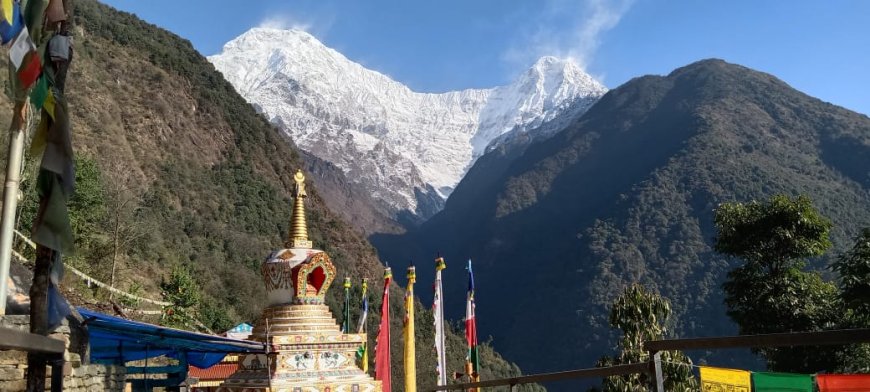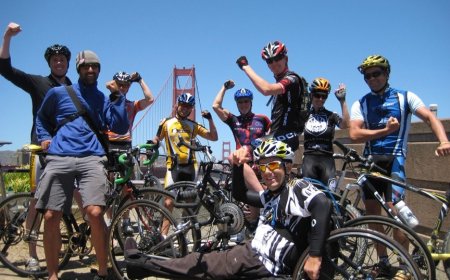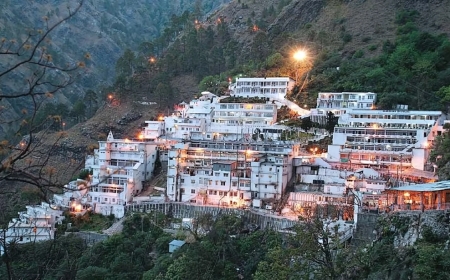How to Prepare for This Thrilling Trekking Jackpot in Nepal: Annapurna
Trek through the Annapurna Conservation Area and witness diverse flora, fauna, and panoramic views in every direction.

TheAnnapurna Base Camp region of Nepal is often touted as a trekking jackpot and with good reason. From the fertile subtropical forests and rows of chiseled stone villages to the towering heights of the Himalayas and their glacial melt rivers, the Annapurna circuit and Annapurna Base camp treks are among the most exhilarating in the world and adventure travelers. At altitudes that soar above 5,000 meters, and along trails that wind through cultural riches and natural marvels, Annapurna is more than a trek its a life-changing challenge and reward in one.
But the key to this jackpot isnt simply lacing up your boots and heading out the door. Preparation is everything. Too many trekkers come underprepared and are defeated by the altitude, the climate change, and even their gear. What is supposed to be a dream vacation becomes a fast-paced dash or worse, a health crisis. Thats why your prep needs to be as multilayered and smart as the trail on Annapurna itself.
This guide offers a clever and methodical way to prepare for your Annapurna experience. Irrespective of whether or not youre tackling the whole circuit or a shorter Base Camp trek, well step you through key gear picks, altitude tactics, health prep, intellectual electricity, weather traits, and logistics planning. You may find out the way to persevere with precision, construct the stamina required, and stay safe in trails that are as cruel as they are spectacular.
Prepare for Success: Pack Right, Not Heavy
Packing for Annapurna is not about cramming your pack, but making choices. Should be good quality trekking boots, thermosilk or thermamax underwear, and a down sleeping bag rated to -6C/20F. Weight is an issue with gear; the higher up you get, the harder everything else is. Dont forget essentials like a headlamp, water purification tablets, a down jacket, and trekking poles. Dont overpack each extra kilo will bloody your gums at altitude. Put your gear on display weeks early and take a look at everything before you leave. Smart packing is the foundation of smooth, efficient travel.
Train Like a Mountain Athlete
Dont wait until youre breathless on Thorong La Pass to regret not training. Cardio is king increase your stamina by hiking, running, stair climbing, and doing interval training. Flex your thighs, gut, and back; theyll become your load and your dream. Work out with a weighted backpack to replicate real trekking. Three months of consistent, progressive training can turn altitude from an enemy to a playground. And remember: the best views come with the highest price and your body pays the tab.
You Control the Altitude or It Controls You
Altitude sickness, let me tell you, is nasty and unpredictable. Acclimatization is your best defense. Hike high, sleep low, and take your time ascending in your acclimatization. Schedule rest days in high villages like Manang. Look up the symptoms of AMS, and consider a preventive like Diamox after consulting a doctor. Hydrate like the cameras are watching you, and the grill is ugly. Altitude doesnt give a damn about your experience it respects preparation. Give it its due and youll not just survive, but thrive up there.
Plan Around Nepals Ever-Shifting Weather
Annapurna is an unpredictable and intense region for weather. The most useful instances for trekking are earlier than the monsoon season (March to May) and just after late September to November. Be equipped for anything: sizzling sun at decrease altitudes, snow at high passes, and surprising rainstorms. A good layering system is essential base layer, insulating layer, and waterproof shell. Keep an eye on the forecast, though, but also trust the guidance you receive on the ground. For climbers 4,000 meters up, weather is more than just background noise it can determine your day, or your life.
Permits, Routes, and Local Knowledge: Early to Lock It In
In Nepal, trekkers need to get the TIMS card and the Annapurna Conservation Area Permit (ACAP). Buy them in Kathmandu or Pokhara ahead of hitting the trail. Read up about your route whether youre taking the full circuit or Base Camp path. Hire a guide or porters; they offer security, access, and cultural immersion. During peak season, booking teahouses in advance can spare you a long, cold night. Logistics are the bones of your adventure build them well, and the flesh will follow.
Develop a Tough Mindset for the Unexpected
Physical strength will get you there, but mental resiliency gets you through. The Annapurna trail is long, hard, and full of surprises altitude sick headaches, cold showers, blisters, a nd even loneliness. Expect discomfort and embrace it. Deliver a few kinds of ideas with you: your goal, an image, a mantra. Be patient if the road appears long, and dont forget to have a good time with small victories. This hike will assignment you, however it will also mould you. True treasures look forward to on the summit: readability, bravery, calm.
The way to prepare for the Annapurna Circuit trek?
Training for the Annapurna Circuit trek requires considerable physical stamina and an excessive-altitude version. Begin training at least 2-3 months beforehand with steady hiking, aerobic (going for walks or cycling), and leg strengthening physical activities. Learn to stroll long distances with a backpack.
Read up on altitude sickness, because at Thorong La Pass youll be 5,416 meters above sea level. Carry layered clothes, worn-in shoes, a good sleeping bag, and things you necessity while trekking. There are ACAP and TIMS permits to arrange, and you should think about travel insurance that includes plans for high-altitude trekking.
How to Get Ready for ABC (Annapurna Base Camp) ?
The perfect fitness level in advance for the ABC trek is a moderate one. Because the trek goes to about 4,130 meters, do consistent cardiovascular activity and light strengthening exercises to increase stamina. Consists of some exercise hikes on steep hillsides or undulating floor wherein possible. % light, however, p.c.Smartt: Youll want apparel for all types of weather, a hiking pole, and a high-quality pair of trekking boots. Even though ABC is decrease than the Thorong la, you can additionally get altitude illness here, so be cautious and trek slowly, take plenty of fluids, and get true rest if you have any symptoms of altitude sickness.
How do you must put together for trekking in Nepal?
Getting ready for trekking in Nepal involves educating your frame, information the terrain, and bringing/buying the right equipment. Nepals trails are tough and far away, so build stamina with uphill walking and long treks. p.c. for distinct climates: there may be sun, rain, and snow. Achieve your allows (such things as TIMS and conservation vicinity passes) particular to the trek. Carry coins for food and lodging, as ATMs are scarce along the trails. Intellectual practice is likewise a key factorNepali treks are surprisingly hard but equally rewarding mentally.
What's the hardest part of Annapurna?
The maximum hard part of the Annapurna Circuit consists of crossing the Thorong los angeles skip, which is at 416 meters (17,769 feet). The excessive altitude, the skinny air, the bloodless, the steep climbs all make it bodily challenging and run a high risk of altitude illness. Most trekkers commence the pass crossing before dawn, to get over it before the winds pick up and the weather becomes even more challenging. The drive to appropriate acclimatization and pace is essential to survive.






































